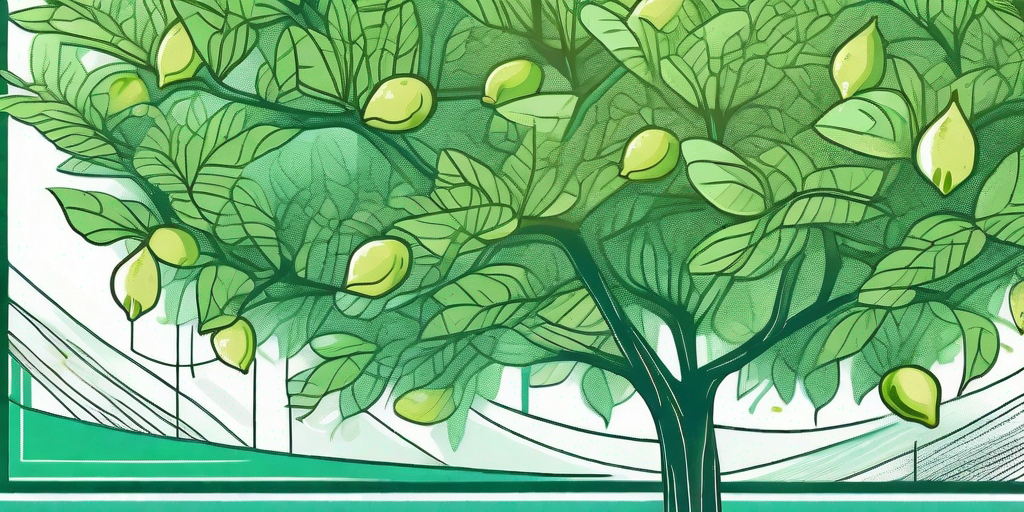
Lime trees, those zesty wonders of the garden, can sometimes be as sour as their fruit when it comes to growing lush, healthy foliage. But don't despair, dear reader! There's a secret weapon to turn your lime tree from lackluster to luscious, and it comes in the form of our top-rated fertilizer. So, roll up your sleeves, put on your gardening gloves, and let's dive into the world of lime tree care.
Understanding Your Lime Tree
Before we start pouring fertilizer all willy-nilly, it's important to understand what makes your lime tree tick. Like a petulant teenager, lime trees have their own unique needs and wants. Ignore them at your peril!
Lime trees thrive in warm, sunny climates and well-drained soil. They're not big fans of the cold, so if you live in a frost-prone area, consider growing your lime tree in a pot that you can bring indoors during winter. They also need a good amount of water, but don't like to have wet feet, so make sure your tree's pot or garden bed has good drainage.
The Importance of Sunlight
Just like us humans, lime trees love a good dose of Vitamin D. They need at least six hours of sunlight each day to grow and produce fruit. If your lime tree is looking a bit pale and interesting, it might be craving some more sun.
But remember, too much of a good thing can be harmful. If your lime tree is getting more than 12 hours of direct sunlight each day, it might start to feel a bit sunburnt. Consider moving your potted lime tree to a slightly shadier spot, or planting a taller tree nearby to provide some shade.
The Role of Water
Water is to lime trees what coffee is to Monday mornings: absolutely essential. Your lime tree needs a deep watering at least once a week, and more often in hot weather. But remember, lime trees don't like soggy soil. If the top inch of soil is still wet, hold off on watering for another day or two.
Over-watering can lead to root rot, a nasty condition that can quickly kill your lime tree. If the leaves start to yellow and fall off, or the tree looks wilted even after watering, you might be dealing with root rot. Cut back on watering, improve drainage, and cross your fingers!
The Magic of Fertilizer
Now that we've covered the basics of lime tree care, let's talk about the secret weapon: fertilizer. Fertilizer is like a multi-vitamin for your lime tree, providing all the nutrients it needs to grow strong and healthy.
But not all fertilizers are created equal. Our top-rated fertilizer is specially formulated for citrus trees, with a balanced mix of nitrogen, phosphorus, and potassium, plus essential trace elements like iron, manganese, and zinc. It's like a gourmet meal for your lime tree!
How to Apply Fertilizer
Applying fertilizer is a cinch. Simply sprinkle it around the base of your lime tree, then water in well. Be careful not to let the fertilizer touch the trunk of the tree, as this can cause burning.
For best results, apply fertilizer in early spring, just before the new growth starts. You can also give your lime tree a top-up in summer and autumn, to keep it well-fed throughout the year.
Signs Your Lime Tree Needs Fertilizer
Like a toddler with a rumbling tummy, your lime tree will let you know when it's hungry. Look out for pale, yellowish leaves, slow growth, and a lack of fruit. These are all signs that your lime tree is lacking in nutrients and could benefit from a dose of fertilizer.
But remember, more is not always better. Over-fertilizing can lead to a buildup of salts in the soil, which can damage the roots of your lime tree. Always follow the recommended dosage on the fertilizer packet, and when in doubt, less is more.
FAQs
Why are the leaves on my lime tree turning yellow?
Yellow leaves can be a sign of several issues, including over-watering, under-watering, lack of sunlight, or a nutrient deficiency. Check your tree's watering and sunlight levels first, and if those are okay, consider applying a dose of our top-rated fertilizer.
Why isn't my lime tree producing fruit?
Lime trees can be a bit fickle when it comes to fruit production. They need plenty of sunlight and water, and a well-balanced diet of nutrients. If your lime tree is not producing fruit, it might be lacking in one or more of these areas. Try moving your tree to a sunnier spot, adjusting your watering schedule, or applying some of our top-rated fertilizer.
Can I grow a lime tree in a pot?
Absolutely! Lime trees grow well in pots, as long as they have plenty of sunlight, water, and nutrients. Just make sure the pot has good drainage, to prevent waterlogging and root rot.
Conclusion
So there you have it, folks. The secret to lush, healthy lime tree foliage is a combination of sunlight, water, and our top-rated fertilizer. With a bit of care and attention, your lime tree will be the envy of the neighborhood in no time. Happy gardening!











